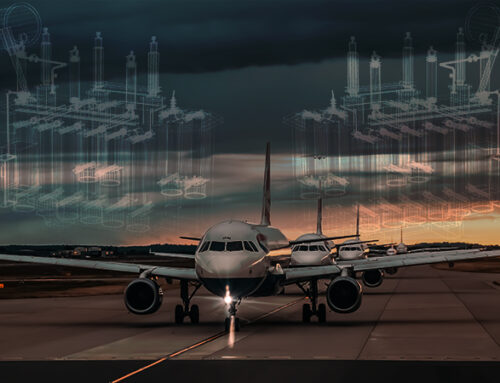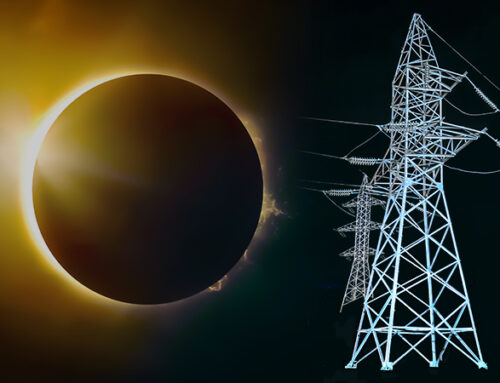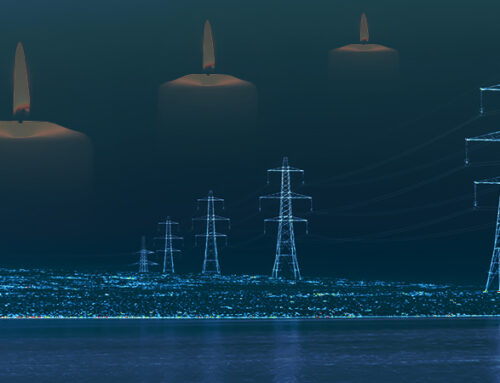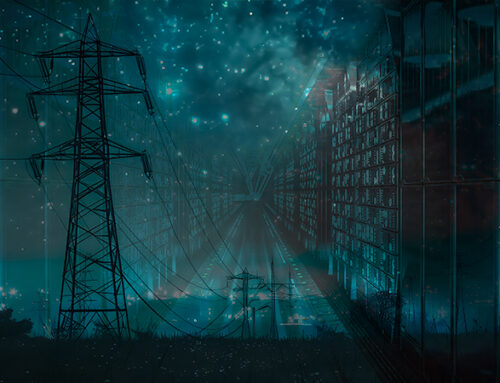When people talk about digitisation in energy the things that spring to mind are often use of sensors to gather more granular consumption information, and more sophisticated market and system data platforms, allowing new forms of trading and optimisation. Another interesting area is the growing use of robotics in energy systems: the advent of drones and droids.
If that sounds very Star Wars then be assured, this is happening here and now, and not in a galaxy far, far away!
There are essentially three types of energy drones and droids: flying systems (drones), climbing and crawling droids and ground based robots, carrying out a range of functions primarily based around inspection. Electricity networks consist of thousands of miles of wires and pylons, all of which need to be monitored in order to quickly diagnose faults which could otherwise cause expensive outages. Automated inspection can cover more ground than manual inspection and reach places such as wind turbine blades that are difficult to reach. They also provide ongoing monitoring of assets that would otherwise only be intermittently inspected such as unmanned sub-stations.
These three categories of energy robotics can be further divided into those which are controlled directly be people, and others which are autonomous. Autonomous devices are equipped with sensors that allow them to navigate their environment by themselves and take appropriate actions.
Drones increasingly deployed to monitor power lines and windfarms
Power line inspection has always been a time-consuming and somewhat tedious activity, but necessary in order to identify and resolve potential threats to the network. These can be from vegetation encroaching too close to power assets, sagging cables, damaged pylons and other related problems.
 In the past, these inspections were carried out manually. Teams of workers would inspect assets in person, climbing poles and assessing vegetation at a rate of tens of miles per day. More recently, inspections have been carried out by helicopter, using imaging equipment, including thermal imaging, to identify areas which need follow-up by teams on the ground. LiDAR technology (light distancing and ranging) which uses laser technology to build 3D images of both assets and surrounding features such as vegetation is a key tool.
In the past, these inspections were carried out manually. Teams of workers would inspect assets in person, climbing poles and assessing vegetation at a rate of tens of miles per day. More recently, inspections have been carried out by helicopter, using imaging equipment, including thermal imaging, to identify areas which need follow-up by teams on the ground. LiDAR technology (light distancing and ranging) which uses laser technology to build 3D images of both assets and surrounding features such as vegetation is a key tool.
While helicopters were a major improvement on the manual inspections, more recent developments involve the use of unmanned aerial vehicles (“UAVs”), or drones, equipped with imaging equipment, which significantly reduces the cost of network inspection. This data collection is beginning to be combined with artificial intelligence and machine learning to identify potential areas of concern.
“Drones let us look at parts of our network which are difficult and costly to reach and where doing so would expose our engineers to risk,”
– Mark Simmons, condition monitoring team leader, National Grid
In the US, Florida Light and Power has been using drones for several years, covering thousands of miles of overhead equipment, at distances up to two miles beyond the pilot’s sight. Power line monitoring in the areas prone to wildfires is extremely important since arcing close to dry vegetation can spark fires.
“It’s a real game changer. They’re 100 times faster than manual measurement, more accurate than helicopters and, with AI devices on board, could soon be able to fix problems,”
– Michal Mazur, Partner, PwC
Drone technology is still relatively new, and regulators are still formulating the right regimes for their use, so most inspection drones currently in use are limited to line-of-sight operations, but these restrictions are likely to be relaxed in order to allow drones to have greater reach. Ultimately they could operate autonomously, travelling between charging points while continuously inspecting electricity grids without direct human control.
Autonomous drones are also being used at solar and wind farms to inspect turbines and solar panels for signs of damage, wear and tear and potential safety concerns.

Climbing and crawling droids inspect hard-to-reach areas
 Another type of robotic inspection device is the climbing or crawling bot. These can be suspended along power lines, or crawl along infrastructure such as wind turbine blades. As with the drones, these devices contain imaging equipment, but unlike the drones they don’t need to expend energy staying airborne, and therefore have a much wider range than a drone on a single charge.
Another type of robotic inspection device is the climbing or crawling bot. These can be suspended along power lines, or crawl along infrastructure such as wind turbine blades. As with the drones, these devices contain imaging equipment, but unlike the drones they don’t need to expend energy staying airborne, and therefore have a much wider range than a drone on a single charge.
Other types of crawlers use suction-powered feet to crawl along the surface of wind turbine blades. Devices such as the BladeBUG are equipped with non-destructive ultrasonic testing capabilities to detect cracks, erosion and fissures, and can repair damaged blades by painting on composite materials onto the damaged area.
While the BladeBUG climbs up, a crawling device called iFROG climbs down, using magnetic adhesion to attach to offshore wind structures operating up to 60 metres below the surface of the sea. The system is designed to check for corrosion, loss of weld integrity, erosion of sediment around foundations and biofouling and provides condition reports to operators. The device contains a cleaning system for removing biofouling. Use of sub-sea robotic devices reduces the need for human divers to operate in hazardous conditions.

Ground operating robots reduce the need for manual monitoring
Ground operating robots are increasingly being used to provide round-the clock monitoring and security to un-manned facilities. Autonomous droids are being used to patrol substations fitted with solar powered docking stations for recharging. These robots are typically equipped with cloud-based control platforms and a variety of communications systems and carry an array of sensors such as gas detecting monitors, ultraviolet sensors to identify corona discharges, directional microphones, thermal and infrared cameras, and high definition optical range cameras.
 Florida Power and Light is developing its own robots equipped with advanced sensors and navigation systems to follow pre-set paths and navigate around equipment. The device searches for animals that may have strayed inside the substation, monitors weather conditions, and checks for issues with equipment, such as over-heating. The robot can cover up to 10 miles on a single charge.
Florida Power and Light is developing its own robots equipped with advanced sensors and navigation systems to follow pre-set paths and navigate around equipment. The device searches for animals that may have strayed inside the substation, monitors weather conditions, and checks for issues with equipment, such as over-heating. The robot can cover up to 10 miles on a single charge.
Robots are also assisting with maintenance and operations. Con Edison is developing a breaker-racking robot which will reduce risk for sub-station operators and maintenance staff, minimising exposure to arc flash hazards and decreasing soft tissue injuries from handling heavy circuit breakers. The device, developed together with ULC Technologies is fitted with cameras for navigation, breaker identification, monitoring the racking indicator, and alignment with the cabinet. It uses two 2D LiDAR units to detect obstacles, and if an obstacle is detected the robot will automatically pause operations while its operator is notified through a warning system. The robot uses laser profilers to detect the features of breakers and cabinets to autonomously align itself in order to execute the racking.
Other applications for substation robots are under consideration. Inspecting the inside of large transformers is difficult…one approach is to lower a camera or endoscope into the transformer to take images, but the range of access is limited. Alternatively, the transformer oil can be drained and then a person sent inside to carry out an inspection, but this is time-consuming and difficult given the large volume of oil (tens of thousands of gallons) and the space constraints. Robots able to swim through the transformer oil while collecting video and still images of the interior would greatly improve the inspection process.
.
While none of these robotic devices is gold and neurotic, they have wide-ranging applications in power systems, greatly expanding the ability of system operators to monitor their assets for potential faults, ensuring they are fixed before they develop into failures that can cause outages. They also reduce the need for human inspectors and maintenance workers to work in hazardous conditions, carrying out basic repairs and reporting on asset condition in hard-to-reach areas. This area of power system automation and digitisation is only going to grow in the coming years.






Leave A Comment